Director: Andre Deed
Writer: Andre Deed
Cast: Andre Deed, Valentina Frascaroli, Mathilde Lambert
Country: Italy
Year of release: 1921
Reviewed from: R0 DVD (Alpha)
This has to be one of the most amazing films that I have ever seen and I am mystified as to why it is not better known. And by ‘better known’ I mean: I had never, ever heard of this. How could this be?
There are some silent sci-fi/horror films that everyone has seen, such as Nosferatu, The Cabinet of Dr Caligari and Metropolis. There are others that people might or might nor have seen, such as Der Golem, The Student of Prague or the John Barrymore Dr Jekyll and Mr Hyde. And there are plenty which are ultra-obscure, of which I have on occasions been privileged to see a copy, such as You’ll Find Out, the 1914 A Christmas Carol and Ultus, Man from the Dead. And of course there are scores which no-one has seen because they are lost forever.
But how could a silent film this extraordinary, this groundbreaking, this cool have escaped my attention so completely that, when I spotted it in Alpha Video’s catalogue, my initial thought was that it must be a modern pastiche of a silent film. There was no way that there could be a 1921 Italian film about a giant robot because if there was - well, I would have read about it somewhere.
But no, bambinos, it does exist. Well, about a third of it does.
This fragmentary version runs 26 minutes at a sensible projection speed, being 740 meters of a film which originally measured 1,821 metres. As such, it would make precious little sense, even with translated intertitles, if Alpha had not thoughtfully added an opening precis derived from contemporary reviews.
The villain of the piece is Mado (Valentina Frascaroli), a female criminal mastermind who escapes from prison by injecting herself with a drug that causes her to appear critically ill. She is transferred to a hospital where she causes a fire and escapes during the confusion, dressed as a nurse.
![]() In the missing footage that preceded this, Mado and her gang had apparently killed an inventor who had designed (but not built, presumably) a huge, remote-controlled robot. The detective who arrested Mado, Ramberto (Fernando Vivas-May) sets out to track her down again but also has to search for the inventor’s kidnapped niece, Elena D’Ara (Mathilde Lambert). Also searching for Elena is our romantic lead, ‘Modestino, called Salterello’ (writer/director Andre Deed) who refers to her father, Professor D’Ara (Gabriel Morceau) as his uncle and is therefore presumably the son of the murdered inventor, as well as Elena’s sweetheart. (‘Salterello’ is a type of dance, derived from the Italian ‘saltare’ meaning to jump or leap.)
In the missing footage that preceded this, Mado and her gang had apparently killed an inventor who had designed (but not built, presumably) a huge, remote-controlled robot. The detective who arrested Mado, Ramberto (Fernando Vivas-May) sets out to track her down again but also has to search for the inventor’s kidnapped niece, Elena D’Ara (Mathilde Lambert). Also searching for Elena is our romantic lead, ‘Modestino, called Salterello’ (writer/director Andre Deed) who refers to her father, Professor D’Ara (Gabriel Morceau) as his uncle and is therefore presumably the son of the murdered inventor, as well as Elena’s sweetheart. (‘Salterello’ is a type of dance, derived from the Italian ‘saltare’ meaning to jump or leap.)
Deed was a little chap, not much over five feet and looking and acting a little like Marty Feldman but without the protruding eyes. He does a lot of Keaton-esque, athletic/comic falls and jump (hence the character’s nickname) and it’s clear that his role is played for comedy, which sits oddly in the film where little else seems to be intended to be funny. That might mean however that this was originally intended as a comedy; after all, many of the best film comedians, from Bob Hope to George Formby, were hilarious precisely because everyone and everything around them was played relatively straight.
Anyway, Elena is recovered with the help of a gypsy woman (I think) but is in a trance-like state, from which she recovers at the sight of Salterello’s ‘hilarious’ clowning. However, it seems that while kidnapped and hypnotised, Elena gave Mado the instructions of how to build a giant robot, ‘The Monster’ goes on the rampage, smashing its way into houses and stealing valuables. In one scene we see Salterello hide in a wardrobe which the robot picks up above its head and carry to the edge of a high balcony; he slips out and escapes just before the wardrobe is smashed to pieces.
When Salterello and friends escape in a car, the robot gives chase, which is quite impressive given that until now it has lumbered along at a very slow walking pace. The chase is brilliantly executed using clever editing and double exposure to show the mechanical monster running along at 30 mph or so, plus some shots which were evidently achieved by attaching the top half of the robot costume to a frame on the back of the car. Then the robot suddenly stops dead as Mado’s control panel, back in her secret hideout, suffers a short circuit. Mado and her gang later collect the robot and ship it back for repairs.
The film’s climax comes at a masked ball in the opera house where Elena is the guest of honour. Someone turns up dressed as the robot which has terrorised the city and everyone thinks it jolly amusing as the costumed giant waves and breaks the tops off champagne bottles. But Elena’s companions are worried - what if that really is the mechanical man, being controlled to act in a friendly, amusing manner in order to lull them into a false sense of security? And so it proves to be.
Fortunately, Professor D’Ara has built his own version of the robot and sends this to the opera house where the two mechanical monstrosities tangle in a fiercesome battle, though truth be told they manage to do little except hold onto each other and shuffle round in a circle, making the exciting confrontation look more like the last dance at the giant robots disco.
At the very same time, Salterello (dressed as Napoleon, by the looks of it) rushes out, steals a police motorbike and heads off for Mado’s hideout, the location of which he has somehow divined. He is followed at high speed by Roberto (in drag!) in a car, who has proof that Salterello is innocent of something that he was arrested for (possibly the original kidnapping of Elena) - although our hero of course thinks that he is about to be re-arrested. In Mado’s hideout, Salterello causes another short circuit and this one backfires through the control panel and kills the evil genius. Mado is one of those supervillains, found in various 1920s and 1930s sci-fi adventures, who never removes her mask. Even in the first scenes we saw, when she was in prison, she still had her mask on. Now Roberto and the cops unmask her and find that the notorious Mado is actually... ah, that would be telling.
Meanwhile, in the opera house, the short circuit in Mado’s robot causes it to explode, bringing chunks of masonry crashing down to destroy both machines. In an epilogue, we see Salterello bidding goodbye to his cousin and uncle before flying off in a large biplane.
![]() What an amazing film! Though chopped about, the quality of the Alpha footage, located in an archive in Sao Paolo, Brazil apparently and released on DVD in 2005, is pretty damn good. There is some terrific tinting, including a neat scene of Mado in prison which is blue but turns yellow when she strikes a match. The new intertitles (English translation by Liz Corra) are tastefully and artistically presented and two shots of a newspaper and a handwritten letter have been replaced with unpretentious, new, computer-generated shots with the headlines and script in English. So full marks for presentation, Alpha, and credit to Rachel Gutches for an effective score which incorporates some crude electronic sounds when the robot appears.
What an amazing film! Though chopped about, the quality of the Alpha footage, located in an archive in Sao Paolo, Brazil apparently and released on DVD in 2005, is pretty damn good. There is some terrific tinting, including a neat scene of Mado in prison which is blue but turns yellow when she strikes a match. The new intertitles (English translation by Liz Corra) are tastefully and artistically presented and two shots of a newspaper and a handwritten letter have been replaced with unpretentious, new, computer-generated shots with the headlines and script in English. So full marks for presentation, Alpha, and credit to Rachel Gutches for an effective score which incorporates some crude electronic sounds when the robot appears.
And what a robot! While it is not quite the 20-foot colossus depicted on the DVD sleeve, it is a good eight or nine feet tall and appears even taller next to the diminutive Deed. Designed to look as if it is made of plate steel, held together with industrial rivets, the costume nevertheless allows the uncredited actor a degree of movement in both arms and legs. The robots has glowing headlights for its eyes and acetylene torches in its hands which allow it to steal a safe in one scene and burn a hole through a locked metal door in another.
There surely can be no precedent for such a huge, mechanical monster - and when it starts carrying Elena in its arms, just before the climactic confrontation, it looks like every iconic 1950s robot, alien or monster. There are a couple of very brief shots of the robot right at the start of this fragment, which are taken from later in the story, and for a while, as I watched a tale about detectives and dinner parties, I wondered if that was all we were going to see - but no, we do get lots of robot footage and even some great (but ultimately disappointing) robot-vs-robot footage.
![]() Almost nothing has been written about this film it seems. I have nothing in my magazine archives and all that I can find on the web, apart from sites listing the Alpha DVD, is a PDF document (now removed), in both English and Italian, about an Italian version, L’Uomo Meccanico (which is listed as 30 minutes so is presumably the same fragment, though with a different score). This lists one additional actor, Giulia Costa, who plays Countess Donadieff. The article points out that Karel Capek’s play RUR, which introduced the word ‘robot’ was written in 1920 and first performed in Prague in 1921, and that this film was passed by the Italian censor on 1st November 1921 but not released until 25th October 1922. Intriguingly, it seems that a ‘ballo meccanico futurista’ was held in Rome in June 1922 featuring a very similar robot costume to the ones in this film. The silent screen’s most famous robot, Maria, did not appear until 1927.
Almost nothing has been written about this film it seems. I have nothing in my magazine archives and all that I can find on the web, apart from sites listing the Alpha DVD, is a PDF document (now removed), in both English and Italian, about an Italian version, L’Uomo Meccanico (which is listed as 30 minutes so is presumably the same fragment, though with a different score). This lists one additional actor, Giulia Costa, who plays Countess Donadieff. The article points out that Karel Capek’s play RUR, which introduced the word ‘robot’ was written in 1920 and first performed in Prague in 1921, and that this film was passed by the Italian censor on 1st November 1921 but not released until 25th October 1922. Intriguingly, it seems that a ‘ballo meccanico futurista’ was held in Rome in June 1922 featuring a very similar robot costume to the ones in this film. The silent screen’s most famous robot, Maria, did not appear until 1927.
This surviving print was shown on the big screen at the 2000 Berlin Film Festival as part of a robot retrospective which also included screenings of Westworld, Demon Seed, Deadly Friend and the three Avengers cybernauts episodes! Apart from the cast and Deed, the only other credit is cinematographer Alberto Chentrens whose other work includes a 1922 Italian version of Ibsen’s The Lady from the Sea.
Andre Deed is described on the back of the DVD as a protege of Georges Méliès, with whom he worked on films such as Dislocation Mysterieuse, a 1901 two-minuter in which Deed’s limbs detach themselves from his body. In 1904 Pathé poached Deed from Méliès in order to learn the secrets behind the director’s special effects.
Deed was born Andre Chapuis in 1884 and worked as a music hall entertainer before making his screen debut. From 1908 until the mid-1920s he starred in a series of knockabout comedies as the tastefully named Cretinetti, who was renamed Boireau in his native France, Turibio in Portugal, Toribio Sanchez in Argentina and Foolshead in the USA. Some of these also featured Valentina Frascaroli who was married to Deed. The Inaccurate Movie Database lists 111 films for him although some of these may be duplicates as it gives Boireau and Cretinetti titles as separate pictures. Some of these had fantasy elements including one film in which Cretinetti dies but causes so much comic havoc in Heaven that God throws him out! Deed also starred in La Panna degli Aeromobili, a 1915 science fiction film about flying cars.
![]() Nevertheless it’s clear, even from the limited availability of English language resources, that Deed was for a few years a huge star in France and Italy (he was lured from Pathé to a studio in Turin in 1909, returned to France in 1911, then moved back to Italy again); I have also seen it stated that he was the first actual ‘movie star’ ie. a personality identified by, and popular with, the movie-going public. His anarchic, surreal, effects-heavy early work was certainly popular with James Joyce who screened his films at Ireland’s first cinema, which opened in 1909.
Nevertheless it’s clear, even from the limited availability of English language resources, that Deed was for a few years a huge star in France and Italy (he was lured from Pathé to a studio in Turin in 1909, returned to France in 1911, then moved back to Italy again); I have also seen it stated that he was the first actual ‘movie star’ ie. a personality identified by, and popular with, the movie-going public. His anarchic, surreal, effects-heavy early work was certainly popular with James Joyce who screened his films at Ireland’s first cinema, which opened in 1909.
Andre Deed died in obscurity in 1938 but his work has recently been rediscovered by film historians and there has even been a book about him (in Italian, sadly).
Though missing a lot of footage and displaying little lasting comedy, The Mechanical Man is a must-see for anyone who loves early science fiction movies. Alpha’s disc pairs the film with The Headless Horseman, a 1922 version of The Legend of Sleepy Hollow starring Will Rogers.
MJS rating: A
Writer: Andre Deed
Cast: Andre Deed, Valentina Frascaroli, Mathilde Lambert
Country: Italy
Year of release: 1921
Reviewed from: R0 DVD (Alpha)
This has to be one of the most amazing films that I have ever seen and I am mystified as to why it is not better known. And by ‘better known’ I mean: I had never, ever heard of this. How could this be?
There are some silent sci-fi/horror films that everyone has seen, such as Nosferatu, The Cabinet of Dr Caligari and Metropolis. There are others that people might or might nor have seen, such as Der Golem, The Student of Prague or the John Barrymore Dr Jekyll and Mr Hyde. And there are plenty which are ultra-obscure, of which I have on occasions been privileged to see a copy, such as You’ll Find Out, the 1914 A Christmas Carol and Ultus, Man from the Dead. And of course there are scores which no-one has seen because they are lost forever.
But how could a silent film this extraordinary, this groundbreaking, this cool have escaped my attention so completely that, when I spotted it in Alpha Video’s catalogue, my initial thought was that it must be a modern pastiche of a silent film. There was no way that there could be a 1921 Italian film about a giant robot because if there was - well, I would have read about it somewhere.
But no, bambinos, it does exist. Well, about a third of it does.
This fragmentary version runs 26 minutes at a sensible projection speed, being 740 meters of a film which originally measured 1,821 metres. As such, it would make precious little sense, even with translated intertitles, if Alpha had not thoughtfully added an opening precis derived from contemporary reviews.
The villain of the piece is Mado (Valentina Frascaroli), a female criminal mastermind who escapes from prison by injecting herself with a drug that causes her to appear critically ill. She is transferred to a hospital where she causes a fire and escapes during the confusion, dressed as a nurse.
 In the missing footage that preceded this, Mado and her gang had apparently killed an inventor who had designed (but not built, presumably) a huge, remote-controlled robot. The detective who arrested Mado, Ramberto (Fernando Vivas-May) sets out to track her down again but also has to search for the inventor’s kidnapped niece, Elena D’Ara (Mathilde Lambert). Also searching for Elena is our romantic lead, ‘Modestino, called Salterello’ (writer/director Andre Deed) who refers to her father, Professor D’Ara (Gabriel Morceau) as his uncle and is therefore presumably the son of the murdered inventor, as well as Elena’s sweetheart. (‘Salterello’ is a type of dance, derived from the Italian ‘saltare’ meaning to jump or leap.)
In the missing footage that preceded this, Mado and her gang had apparently killed an inventor who had designed (but not built, presumably) a huge, remote-controlled robot. The detective who arrested Mado, Ramberto (Fernando Vivas-May) sets out to track her down again but also has to search for the inventor’s kidnapped niece, Elena D’Ara (Mathilde Lambert). Also searching for Elena is our romantic lead, ‘Modestino, called Salterello’ (writer/director Andre Deed) who refers to her father, Professor D’Ara (Gabriel Morceau) as his uncle and is therefore presumably the son of the murdered inventor, as well as Elena’s sweetheart. (‘Salterello’ is a type of dance, derived from the Italian ‘saltare’ meaning to jump or leap.)Deed was a little chap, not much over five feet and looking and acting a little like Marty Feldman but without the protruding eyes. He does a lot of Keaton-esque, athletic/comic falls and jump (hence the character’s nickname) and it’s clear that his role is played for comedy, which sits oddly in the film where little else seems to be intended to be funny. That might mean however that this was originally intended as a comedy; after all, many of the best film comedians, from Bob Hope to George Formby, were hilarious precisely because everyone and everything around them was played relatively straight.
Anyway, Elena is recovered with the help of a gypsy woman (I think) but is in a trance-like state, from which she recovers at the sight of Salterello’s ‘hilarious’ clowning. However, it seems that while kidnapped and hypnotised, Elena gave Mado the instructions of how to build a giant robot, ‘The Monster’ goes on the rampage, smashing its way into houses and stealing valuables. In one scene we see Salterello hide in a wardrobe which the robot picks up above its head and carry to the edge of a high balcony; he slips out and escapes just before the wardrobe is smashed to pieces.
When Salterello and friends escape in a car, the robot gives chase, which is quite impressive given that until now it has lumbered along at a very slow walking pace. The chase is brilliantly executed using clever editing and double exposure to show the mechanical monster running along at 30 mph or so, plus some shots which were evidently achieved by attaching the top half of the robot costume to a frame on the back of the car. Then the robot suddenly stops dead as Mado’s control panel, back in her secret hideout, suffers a short circuit. Mado and her gang later collect the robot and ship it back for repairs.
The film’s climax comes at a masked ball in the opera house where Elena is the guest of honour. Someone turns up dressed as the robot which has terrorised the city and everyone thinks it jolly amusing as the costumed giant waves and breaks the tops off champagne bottles. But Elena’s companions are worried - what if that really is the mechanical man, being controlled to act in a friendly, amusing manner in order to lull them into a false sense of security? And so it proves to be.
Fortunately, Professor D’Ara has built his own version of the robot and sends this to the opera house where the two mechanical monstrosities tangle in a fiercesome battle, though truth be told they manage to do little except hold onto each other and shuffle round in a circle, making the exciting confrontation look more like the last dance at the giant robots disco.
At the very same time, Salterello (dressed as Napoleon, by the looks of it) rushes out, steals a police motorbike and heads off for Mado’s hideout, the location of which he has somehow divined. He is followed at high speed by Roberto (in drag!) in a car, who has proof that Salterello is innocent of something that he was arrested for (possibly the original kidnapping of Elena) - although our hero of course thinks that he is about to be re-arrested. In Mado’s hideout, Salterello causes another short circuit and this one backfires through the control panel and kills the evil genius. Mado is one of those supervillains, found in various 1920s and 1930s sci-fi adventures, who never removes her mask. Even in the first scenes we saw, when she was in prison, she still had her mask on. Now Roberto and the cops unmask her and find that the notorious Mado is actually... ah, that would be telling.
Meanwhile, in the opera house, the short circuit in Mado’s robot causes it to explode, bringing chunks of masonry crashing down to destroy both machines. In an epilogue, we see Salterello bidding goodbye to his cousin and uncle before flying off in a large biplane.
 What an amazing film! Though chopped about, the quality of the Alpha footage, located in an archive in Sao Paolo, Brazil apparently and released on DVD in 2005, is pretty damn good. There is some terrific tinting, including a neat scene of Mado in prison which is blue but turns yellow when she strikes a match. The new intertitles (English translation by Liz Corra) are tastefully and artistically presented and two shots of a newspaper and a handwritten letter have been replaced with unpretentious, new, computer-generated shots with the headlines and script in English. So full marks for presentation, Alpha, and credit to Rachel Gutches for an effective score which incorporates some crude electronic sounds when the robot appears.
What an amazing film! Though chopped about, the quality of the Alpha footage, located in an archive in Sao Paolo, Brazil apparently and released on DVD in 2005, is pretty damn good. There is some terrific tinting, including a neat scene of Mado in prison which is blue but turns yellow when she strikes a match. The new intertitles (English translation by Liz Corra) are tastefully and artistically presented and two shots of a newspaper and a handwritten letter have been replaced with unpretentious, new, computer-generated shots with the headlines and script in English. So full marks for presentation, Alpha, and credit to Rachel Gutches for an effective score which incorporates some crude electronic sounds when the robot appears.And what a robot! While it is not quite the 20-foot colossus depicted on the DVD sleeve, it is a good eight or nine feet tall and appears even taller next to the diminutive Deed. Designed to look as if it is made of plate steel, held together with industrial rivets, the costume nevertheless allows the uncredited actor a degree of movement in both arms and legs. The robots has glowing headlights for its eyes and acetylene torches in its hands which allow it to steal a safe in one scene and burn a hole through a locked metal door in another.
There surely can be no precedent for such a huge, mechanical monster - and when it starts carrying Elena in its arms, just before the climactic confrontation, it looks like every iconic 1950s robot, alien or monster. There are a couple of very brief shots of the robot right at the start of this fragment, which are taken from later in the story, and for a while, as I watched a tale about detectives and dinner parties, I wondered if that was all we were going to see - but no, we do get lots of robot footage and even some great (but ultimately disappointing) robot-vs-robot footage.
 Almost nothing has been written about this film it seems. I have nothing in my magazine archives and all that I can find on the web, apart from sites listing the Alpha DVD, is a PDF document (now removed), in both English and Italian, about an Italian version, L’Uomo Meccanico (which is listed as 30 minutes so is presumably the same fragment, though with a different score). This lists one additional actor, Giulia Costa, who plays Countess Donadieff. The article points out that Karel Capek’s play RUR, which introduced the word ‘robot’ was written in 1920 and first performed in Prague in 1921, and that this film was passed by the Italian censor on 1st November 1921 but not released until 25th October 1922. Intriguingly, it seems that a ‘ballo meccanico futurista’ was held in Rome in June 1922 featuring a very similar robot costume to the ones in this film. The silent screen’s most famous robot, Maria, did not appear until 1927.
Almost nothing has been written about this film it seems. I have nothing in my magazine archives and all that I can find on the web, apart from sites listing the Alpha DVD, is a PDF document (now removed), in both English and Italian, about an Italian version, L’Uomo Meccanico (which is listed as 30 minutes so is presumably the same fragment, though with a different score). This lists one additional actor, Giulia Costa, who plays Countess Donadieff. The article points out that Karel Capek’s play RUR, which introduced the word ‘robot’ was written in 1920 and first performed in Prague in 1921, and that this film was passed by the Italian censor on 1st November 1921 but not released until 25th October 1922. Intriguingly, it seems that a ‘ballo meccanico futurista’ was held in Rome in June 1922 featuring a very similar robot costume to the ones in this film. The silent screen’s most famous robot, Maria, did not appear until 1927.This surviving print was shown on the big screen at the 2000 Berlin Film Festival as part of a robot retrospective which also included screenings of Westworld, Demon Seed, Deadly Friend and the three Avengers cybernauts episodes! Apart from the cast and Deed, the only other credit is cinematographer Alberto Chentrens whose other work includes a 1922 Italian version of Ibsen’s The Lady from the Sea.
Andre Deed is described on the back of the DVD as a protege of Georges Méliès, with whom he worked on films such as Dislocation Mysterieuse, a 1901 two-minuter in which Deed’s limbs detach themselves from his body. In 1904 Pathé poached Deed from Méliès in order to learn the secrets behind the director’s special effects.
Deed was born Andre Chapuis in 1884 and worked as a music hall entertainer before making his screen debut. From 1908 until the mid-1920s he starred in a series of knockabout comedies as the tastefully named Cretinetti, who was renamed Boireau in his native France, Turibio in Portugal, Toribio Sanchez in Argentina and Foolshead in the USA. Some of these also featured Valentina Frascaroli who was married to Deed. The Inaccurate Movie Database lists 111 films for him although some of these may be duplicates as it gives Boireau and Cretinetti titles as separate pictures. Some of these had fantasy elements including one film in which Cretinetti dies but causes so much comic havoc in Heaven that God throws him out! Deed also starred in La Panna degli Aeromobili, a 1915 science fiction film about flying cars.
 Nevertheless it’s clear, even from the limited availability of English language resources, that Deed was for a few years a huge star in France and Italy (he was lured from Pathé to a studio in Turin in 1909, returned to France in 1911, then moved back to Italy again); I have also seen it stated that he was the first actual ‘movie star’ ie. a personality identified by, and popular with, the movie-going public. His anarchic, surreal, effects-heavy early work was certainly popular with James Joyce who screened his films at Ireland’s first cinema, which opened in 1909.
Nevertheless it’s clear, even from the limited availability of English language resources, that Deed was for a few years a huge star in France and Italy (he was lured from Pathé to a studio in Turin in 1909, returned to France in 1911, then moved back to Italy again); I have also seen it stated that he was the first actual ‘movie star’ ie. a personality identified by, and popular with, the movie-going public. His anarchic, surreal, effects-heavy early work was certainly popular with James Joyce who screened his films at Ireland’s first cinema, which opened in 1909.Andre Deed died in obscurity in 1938 but his work has recently been rediscovered by film historians and there has even been a book about him (in Italian, sadly).
Though missing a lot of footage and displaying little lasting comedy, The Mechanical Man is a must-see for anyone who loves early science fiction movies. Alpha’s disc pairs the film with The Headless Horseman, a 1922 version of The Legend of Sleepy Hollow starring Will Rogers.
MJS rating: A
review originally published 31st October 2005

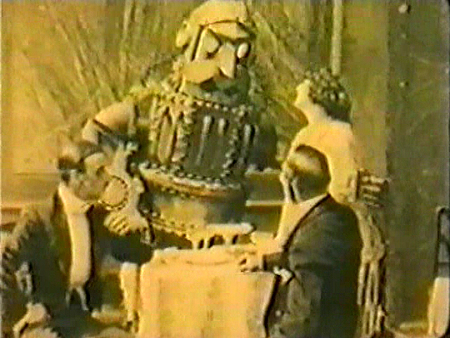






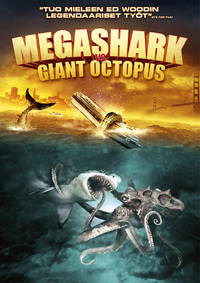
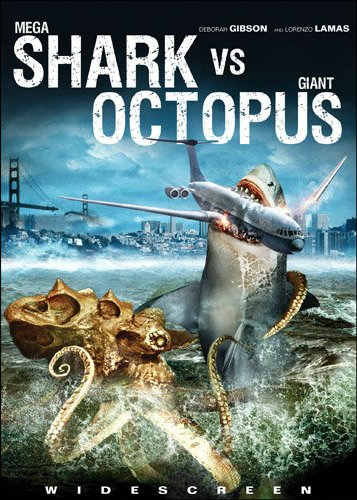
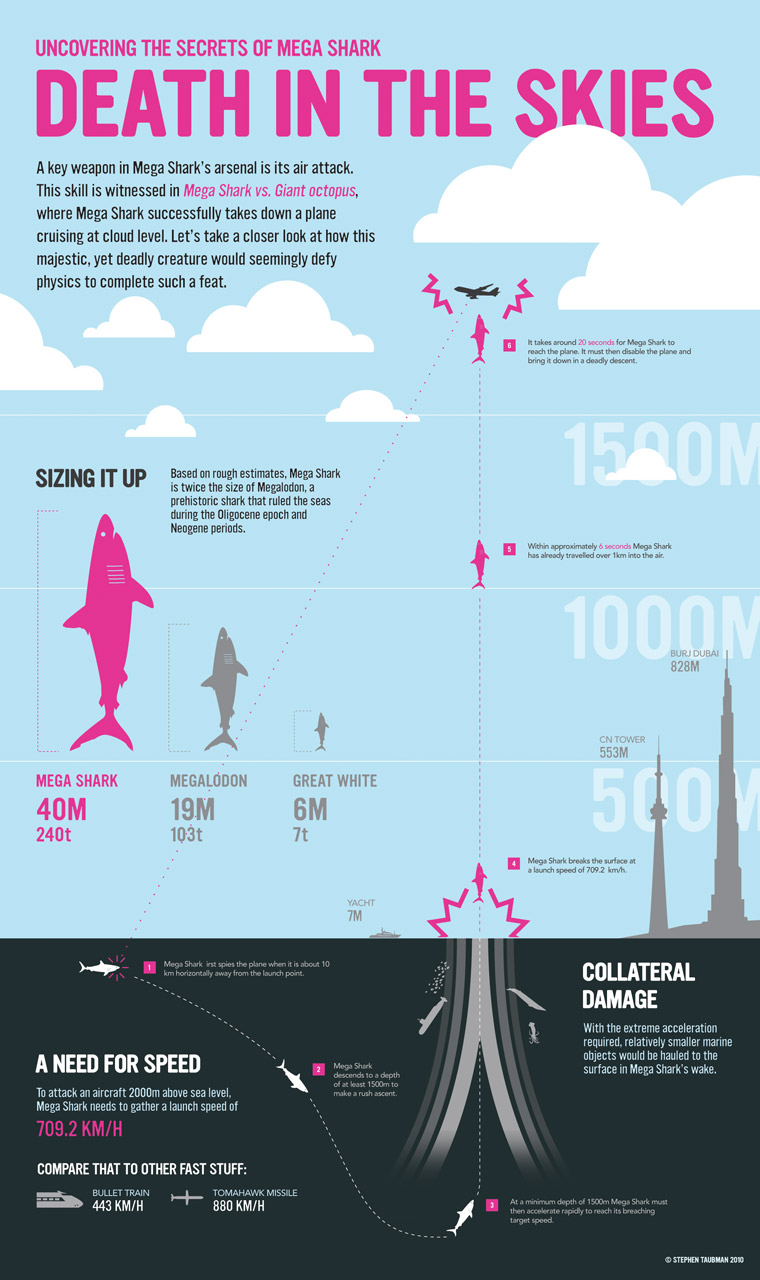

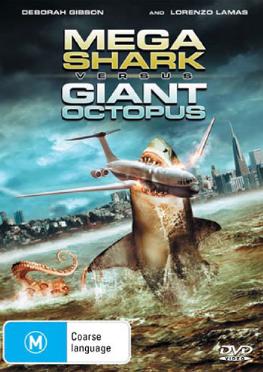
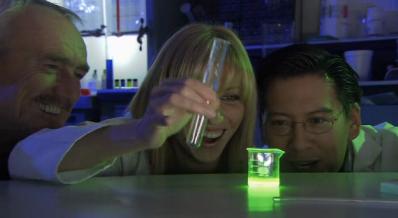







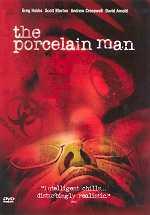



























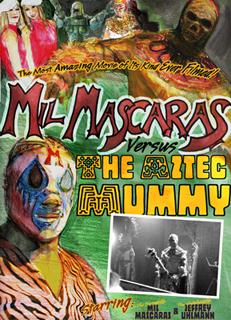



















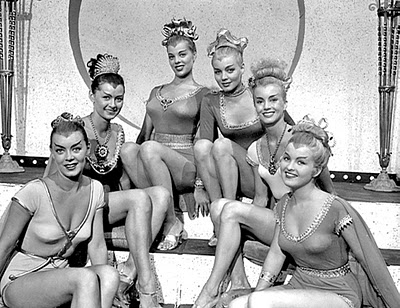

















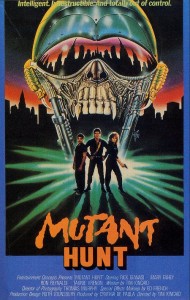







.jpg)

